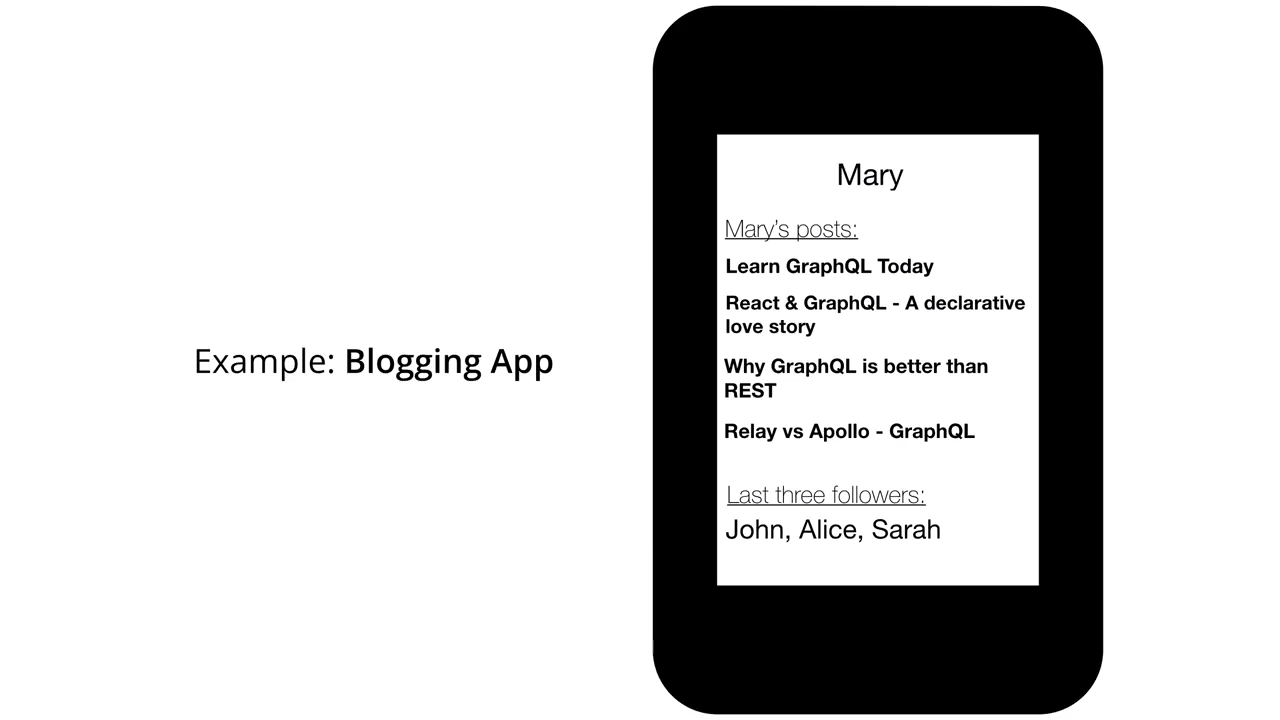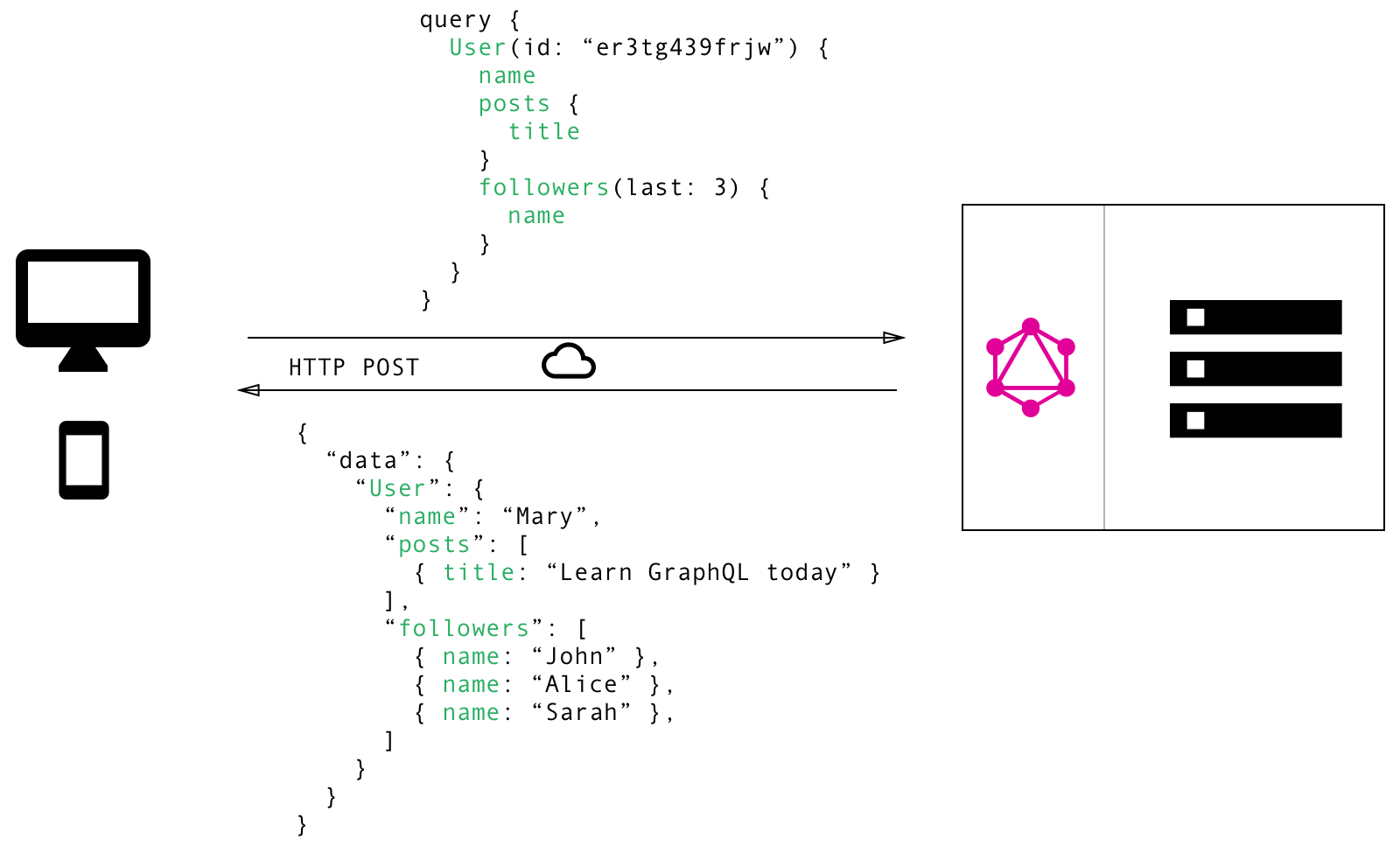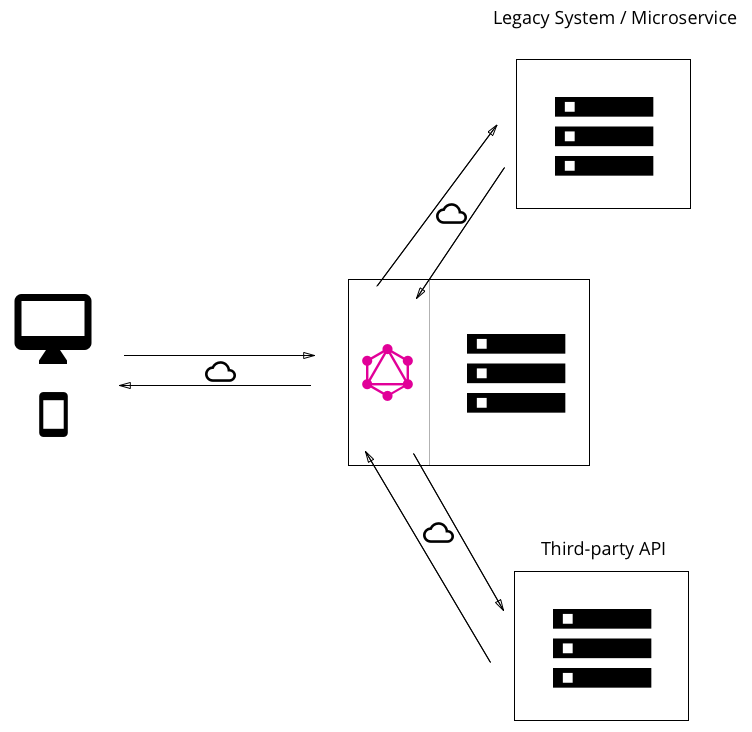GraphQL 101
From John Tsevdos / @tsevdos
Agenda
- what is graphQL
- graphQL fundamentals
- differences with REST
- graphQL schema and types
- advantages and disadvantages
I'm not a graphQL expert
I recently used/consumed Github's graphQL API for a personal project and I'm just sharing what I learned
What is graphQL
- graphQL is a new API specification (standard)
- graphQL is language / framework agnostic
- a query language for APIs
- enables declarative data fetching
- a more efficient, powerful and flexible alternative to REST
- created by Facebook (2012)
- production ready (Github, Facebook, Netflix, etc.)
An example

REST implementation: 3 API endpoints
- /users/<id>
- /users/<id>/posts
- /users/<id>/followers
REST: User response
{
"id": 123,
"firstname": "John",
"lastname": "Tsevdos",
"age": 36,
"address": { ... },
"hobbies": ["movies", "football"],
"isOlympiacos": true,
...
}
REST: Posts response
{
"posts": [
{
"id": 1234,
"date": "2018-03-25 12:40",
"title": "My title",
"body": "Great post!",
"comments": [...]
},
...
]
}
REST: Followers response
{
"followers": [
{
"id": 123,
"firstname": "George",
"lastname": "Papadopoulos",
"age": 36,
"address": { ... },
"hobbies": ["football"]
}
...
]
}
REST: Client requests

REST implementation is:
- overfetching: downloading unnecessary data
- underfetching: an endpoint doesn’t return enough of the right information
GraphQL request
query {
User(id: 1234) {
name
posts {
title
}
followers(last: 3) {
name
}
}
}
GraphQL response
{
"data": {
"User": {
"name": "John",
"posts": [
{
"title": "My sexy title"
}
...
],
"followers": [
{
"name": "George",
"name": "Panos",
"name": "Nikos"
}
]
}
}
}
GraphQL is better

Better than REST
- no more over and under fetching
- client-oriented API
- schema & type system
GraphQL:
- has a single endpoint
- uses only the POST HTTP verb
Schema Definition Language (SDL): Types
type Person {
name: String!
age: Int!
}
type Post {
title: String!
}
The ! following the type means that this field is required.
Schema Definition Language (SDL): Relationships
type Person {
name: String!
age: Int!
posts: [Post!]!
}
type Post {
title: String!
author: Person!
}
One to many relationship
Fetching data: Queries
{
allPersons {
name
age
}
}
The allPersons field in this query is called the root type of the query. Everything that follows the root type, is called the payload of the query.
Fetching data: Response
{
"data": {
"allPersons": [
{
"name": "John",
"age": 19
},
{
"name": "George",
"age": 25
},
{
"name": "Bill",
"age": 30
}
...
]
}
}
Fetching data: Queries and nested information
{
allPersons {
name
age
posts {
title
}
}
}
Fetching data: Response
{
"data": {
"allPersons": [
{
"name": "John",
"age": 19,
"posts": [
{
"title": "GraphQL 101"
},
{
"title": "React tips"
}
]
},
{
"name": "George",
"age": 25,
"posts": [
{
"title": "REST is dead."
}
]
}
...
]
}
}
Fetching data: Queries with arguments
{
allPersons(last: 2) {
name
age
}
}
Fetching data: Response
{
"data": {
"allPersons": [
{
"name": "John",
"age": 19
},
{
"name": "George",
"age": 25
}
]
}
}
Mutations
- creating new data
- updating existing data
- deleting existing data
Mutations: Create data
mutation {
createPerson(name: "John", age: 36) {
name
age
}
}
// Response
{
"data": {
"createPerson": {
"name": "John",
"age": 36
}
}
}
Mutations: Create data
mutation {
createPerson(name: "John", age: 36) {
id
}
}
// Response
{
"data": {
"createPerson": {
"id": 12345
}
}
}
Subscriptions
- realtime updates
- client subscribes to an event, it will initiate and hold a steady connection to the server
- subscriptions represent a stream of data
Subscriptions example
subscription {
newPerson {
name
age
}
}
// Response
{
"data": {
"newPerson": {
"name": "Jane",
"age": 23
}
}
Defining a schema
- defines the capabilities of the API
- defines how clients can fetch and update data
- contract between the server and client
- is a collection of graphQL types with special root types
Defining a schema
- query, mutation, and subscription types are the entry points for the requests
- example of the above allPersons-query
type Query { ... }
type Mutation { ... }
type Subscription { ... }
// Example
type Query {
allPersons: [Person!]!
}
Defining a schema
allPersonsis called a root type of the APIlastargument to theallPersonsfield
type Query {
allPersons(last: Int): [Person!]!
}
Defining a schema
- Mutation (
createPerson) example
type Mutation {
createPerson(name: String!, age: Int!): Person!
}
Defining a schema
- Subscription (
newPerson) example
type Subscription {
newPerson: Person!
}
Our entire schema so far
type Query {
allPersons(last: Int): [Person!]!
}
type Mutation {
createPerson(name: String!, age: Int!): Person!
}
type Subscription {
newPerson: Person!
}
type Person {
name: String!
age: Int!
posts: [Post!]!
}
type Post {
title: String!
author: Person!
}
A more realistic schema
type Query {
allPersons(last: Int): [Person!]!
allPosts(last: Int): [Post!]!
}
type Mutation {
createPerson(name: String!, age: Int!): Person!
updatePerson(id: ID!, name: String!, age: Int!): Person!
deletePerson(id: ID!): Person!
createPost(title: String!): Post!
updatePost(id: ID!, title: String!): Post!
deletePost(id: ID!): Post!
}
Architecture
GraphQL is just a specification
- graphQL server with a connected database
- graphQL server to integrate existing system
- a hybrib approach with a connected database and integration of existing system
GraphQL server with a connected database
- ideal for new projects
- graphQL web server connected with SQL/NoSQL database(s)

GraphQL layer that integrates existing systems
- ideal for companies with legacy infrastructures and many different APIs
- graphQL can be used to unify existing systems and hide complexity of data
- web server doesn't care about what datasources are (databases, web services, 3rd party APIs, etc.)

Hybrid approach
- GraphQL web server with connected database and integration of existing systems

Advantages
- strongly typed schema
- no more overfetching and underfetching
- support for real-time data
- can be added gradually to an existing service
Disadvantages
- server-side complexity
- caching